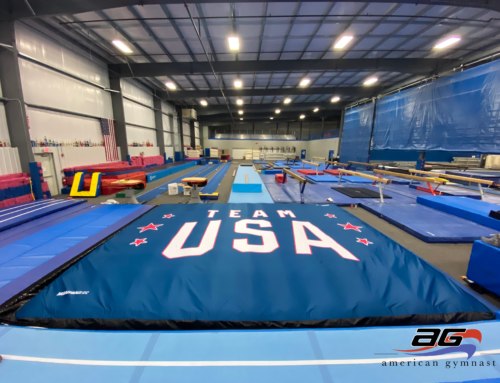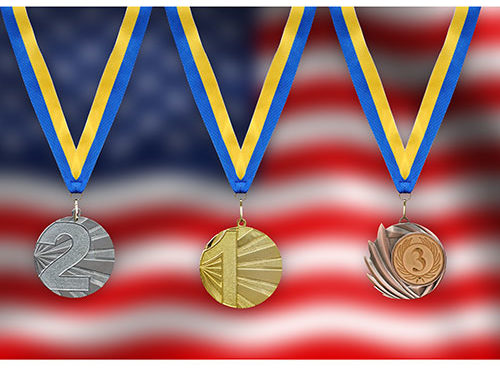Here’s my latest updated Men’s StockWatch, in preparation for the upcoming Olympic Trials:
1. John Orozco
2. Danell Leyva
3. Jonathan Horton
4. Jake Dalton
5. Sam Mikulak
6. Alex Naddour
7. Glen Ishino
8. Chris Brooks
9. Brandon Wynn
10. Steve Legendre
11. Paul Ruggeri
12. Alex Buscaglia
13. David Sender
14. Joshua Dixon
15. CJ Maestas
Things have changed quite a bit with this list since Day 2 of the men’s Visa Championships. Below I’ve posted some comments on each one of these 15 gymnasts competing at the Olympic Trials:
The top spot really isn’t too significant. I swapped John Orozco and Danell Leyva because Orozco ended up winning the all-around (albeit by just 0.05) and also showed more versatility than Leyva, placing in the top three on four different events – pommel horse, rings, p-bars, and high bar (Leyva placed in the top three on p-bars and high bar, in fact winning both). But in reality, both gymnasts are locks at this point, and the top spot is more about bragging rights than anything else.
I still have Jake Dalton just ahead of Sam Mikulak, although these two spots are very, very close right now. Dalton and Mikulak are very similar gymnasts – both are very strong on floor and vault and have the exact same start values (6.6 on floor and 7.0 on vault) and almost identical scoring potential on these two events. But Dalton has a longer proven history on floor and vault and hit all four of these routines at Visa’s, while Mikulak did have a fall on floor on Day 1. Both gymnasts have a third event that will be needed by the team in London – for Dalton it’s rings, and for Mikulak it’s pommel horse. For this reason, I consider Mikulak’s position more tenuous than Dalton’s because his entire Olympic chances may very well be hinging on him hitting pommel horse again both days at Trials. While he is certainly capable of doing this, this is not nearly as much of a guarantee as Dalton continuing to hit rings – the most stable event in men’s gymnastics. One could argue that Mikulak could be used on p-bars and is a strong backup for high bar, and based on how he was scored at Visa’s on these two events, this is certainly the case. But this team also already has Oroczo, Leyva, and Horton – all of whom are great on p-bars and high bar – and thus Mikulak isn’t as essential here. Make no mistake about it, though – if Mikulak does at Trials what he did at Visa’s, he could easily move up on this list, depending on what Dalton and Horton do.
The two pommel horse specialists are next. Based on Alex Naddour outscoring Glen Ishino on Day 2 as well as in the two-day totals (30.10 vs 29.85), I had to move Naddour slightly in front. There’s no question that both gymnasts are still in the Olympic picture, and that’s why the pommel horse scores at Trials are going to be absolutely HUGE – even more important than they were at Visa’s. If either one of these guys hits 15’s both days at Trials, it’s going to make things very difficult for this selection committee. My guess is that the ball will still be in Mikulak’s court – if he performs like he did at Visa’s, I’d say the spot is still his. If he gives in at all – especially on pommel horse – one of these guys will probably be the first to sneak back onto this Olympic team.
Chris Brooks did a great job overall at Visa’s, but there’s no question his chances were hurt significantly by three falls on Day 2 – one on high bar, one on vault, and one on pommel horse.. He’s still one of the best all-around gymnasts in the country and could easily be used on FIVE out of the six events (and isn’t that bad on pommel horse either), which is why I still feel he’s a very likely alternate. I hope he nails 12 for 12 at Trials and makes things even more difficult for the selection committee, because I do love his gymnastics and the overall spirit he brings to this team.
Brandon Wynn’s position hasn’t changed overall (still 9th), though he was passed by Mikulak but now ahead of Legendre. Wynn scored strongly on rings at Visa’s (15.35 and 15.45), but not high enough to be a slam dunk Olympic team member or even a guaranteed alternate at this point. The only way I could see Wynn making this team is if: Mikulak continues to rock at Trials (especially on pommel horse) and gets named to the team, Dalton has some trouble, and Wynn scores even a little higher on rings. If all of those things happen, the committee could consider this almost “guaranteed” rings score to be enough to justify replacing Dalton, but I honestly don’t see that happening right now. Right now, Dalton clearly brings more points to the team on floor and vault than Wynn brings on rings. Wynn’s rings score will certainly be important to keep an eye on though – especially compared to Dalton’s rings score, since that will be the score he’d be replacing.
Day 2 at Visa’s was a disaster for Steve Legendre. It definitely seemed as though he had the wind taken out of his sails when he fell on floor – his first event. His fall came on an incredibly difficult combination – a front double full to double front – and the rest of the routine was excellent. It didn’t have to be a total disastrous day – in fact he scored better on pommel horse and rings than he did on Day 1 – but falling on his vault was the real kicker for his Olympic chances. Coming into this meet, one of Legendre’s biggest challenges was to prove that his Dragulescu is as reliable as the “safer” appearing Kasamatsu double fulls done by Dalton and Mikulak. Unfortunately, Legendre’s fall proved the opposite, and he immediately knew it. Missing high bar on the last event appeared to be a result of what had already happened on his specialties. Fatigue seems to set in so much more when you’ve had a bad day. We still can’t ignore Legendre’s 16’s he put up on both floor and vault on Day 1, or the fact that he does have a 0.3 advantage on floor over both Mikulak and Dalton. But since we wouldn’t use Legendre on pommel horse, the only reasonable gymnast for Legendre to possibly bump off this Olympic team would be his own teammate, Dalton. I think he’d have to outscore Dalton on floor, vault, and possibly even rings both days at Trials in order to do that. Right now Legendre is still in the running for an alternate spot – along with Brooks, Naddour, Ishino, and Wynn – so I hope he keeps fighting for this.
Spots 11, 12, and 14 all go to gymnasts who are among the best of the field on floor, vault, and high bar – Paul Ruggeri, Alex Buscaglia, and Joshua Dixon. Ruggeri had a great all-around competition at Visa’s – particularly on Day2 – and placed an impressive 7th all-around. He also tied for 2nd on floor and placed 4th on high bar, and hit a 16.05 on vault on Day 2 (half-on handspring front double full). Like Ruggeri, Buscaglica also had a great meet on Day 2 in particular and placed 9th in the all-around. Highlights for him included a 4th place finish on floor (15.4 and 15.5) and a couple of huge scores on Day 2 – a 16.2 on vault for his half-on handspring front double full and a 15.8 on high bar with a massive 7.1 D-score. Dixon, who now trains at the USOTC, didn’t have many spectacular scores but did show 15-potential on floor (15.2 and 14.9), 15-potential on high bar (15.35 on Day 1), and 16-potential on vault (16.15 on Day 1). Right now I don’t see any of these three guys having strong chances to make the team, but an alternate spot isn’t out of the question – especially if the committee really wants to have another floor and vault specialist waiting in the wings in case one of the team members gets injured. Ruggeri would have the best shot at this, and even then he’d have to move past Legendre, which would probably require Legendre to make some more mistakes at Trials.
David Sender has had an impressive comeback, and although I think making the team is a real long shot, I was pleased to see they invited him through to the Trials. Interestingly, David actually competed in the 2004 Olympic Trials at just 18 years of age (he had just won the 2004 Junior Olympic nationals the month before!), and he became a major player for the U.S. over the next quadrennium. Winning the all-around at the 2008 U.S. Championships was the pinnacle of his career, and unfortunately spraining his ankle weeks later while training at the Olympic Trials proved to be the low point. He didn’t even compete in the competition and was left off the Olympic team entirely – which means the upcoming Olympic Trials will be his first time back at this competition in eight years. His Yurchenko double pike on vault on Day 1 at Visa’s was incredible, but since we have some other safer 7.0 vaults in the mix (Dalton and Mikulak), I don’t see this vault launching him onto the Olympic team. Rings is the other area where David can contribute, and although he showed a strong D-score of 6.7, he hasn’t yet proven he can score high enough to be really valuable. In fact, both Brooks and Dalton outscored him by a little bit here. This trip to the Olympic Trials will be a sweet one for David Sender, and even if it doesn’t lead to London, it will hopefully be a much more satisfying end to his career.
CJ Maestas rounds out the 15 gymnasts going to Trials. CJ has been on many Olympic lists over the last year or two – primarily for his strength on rings but also for his potential on some other events, including pommel horse. Pommel horse never quite came around for him, though – at least in national competition – and at last weekend’s Visa’s, rings turned out to be the only area where he showed the capability of really contributing to Team USA. Since his scores here were in the low-15 range (15.05 and 15.2), it is doubtful this will put him in the mix. But his D-score is a 6.7 – the same as the top two ring scorers, Horton and Wynn – and thus there is plenty of room for Maestas to improve this score. He’ll need to score in the high-15’s in order to truly give the selection committee something to think about.



Leave A Comment